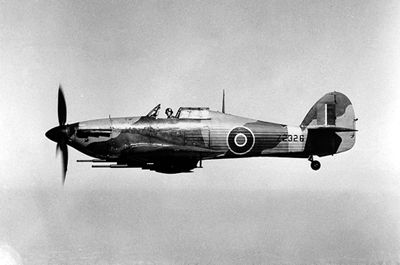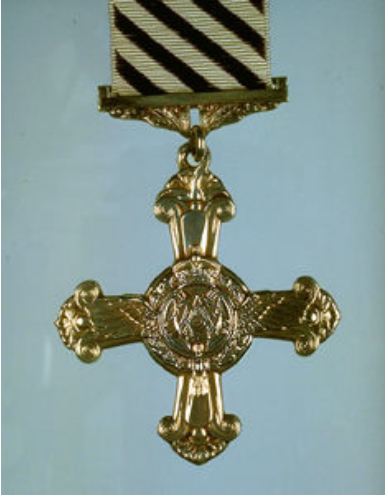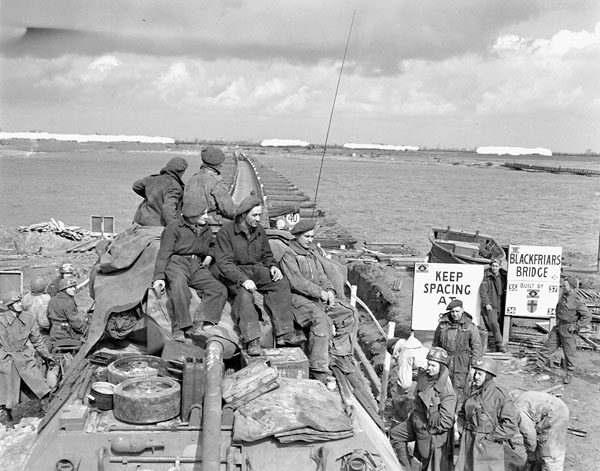Lead-up to Battle
When Britain declared war on Germany on 3 September 1939, the RAF was still in the process of building up its strength. Its pre-war focus on the strategic bombing of German targets had gradually given way to the need for an active defence against enemy aerial attack on Britain.
Technological innovations, such as radar, and a new generation of monoplane (single wing) fighters — the Hawker Hurricane and Supermarine Spitfire — were linked together by a unique command-and-control system under the authority of Fighter Command. Supplying a sufficient number of pilots was a problem, but aggressive recruiting in both Britain and the far- flung dominions of the British Empire, including Canada, brought in new recruits at a steady pace.
From the mid-1930’s, with the tacit support of the federal government in Ottawa and help from the Royal Canadian Air Force (RCAF), Canada had been a good source for RAF recruits for both flying and non-flying positions. The country was emerging from the economic chaos of the Great Depression, and had only a small domestic air force, so Canadians seeking adventure or just a steady aviation job turned to the RAF in ever-increasing numbers. Collectively, these Canadians in the RAF became known as CAN/RAF. It's estimated that more than 1,800 of them served in the British flying services during the entire war.
No. 242 Squadron
In October 1939, primarily to encourage additional recruiting and as a public relations initiative, No. 242 (Canadian) Squadron was formed within the RAF. Commanded by Squadron Leader Fowler Gobeil, an RCAF pilot on exchange with the RAF, all but one of the squadron's pilots and up to 40 per cent of its ground crew were CAN/RAF personnel. It would be the largest grouping of Canadians in the air battles to come, until the arrival of the RCAF’s No.1 Squadron in June 1940.
Except for fighting over Norway, combat between the RAF and Luftwaffe (the German air force) had been sporadic until 10 May 1940. On that date, the German invasion of the Netherlands, France and Belgium brought the RAF and Luftwaffe into violent conflict. By the time France fell to Germany on 22 June 1940, the British had lost 1,029 aircraft and 1,500 air crew, many of whom were Canadian.
Committed piecemeal to France in late May, No. 242 Squadron was actively engaged throughout this period. Squadron Leader Gobeil claimed the first RCAF aerial victory on 25 May. By the time the squadron was withdrawn to England on 18 June to rest and rebuild, the large number of casualties and their subsequent replacement by British pilots meant that, for all practical purposes, the unit was “Canadian” in name only.
No. 1 (Fighter) Squadron
Alarmed by the possibility of Britain's defeat, the Canadian government sent its only Hurricane-equipped unit, No. 1 (Fighter) Squadron, to England on 8 June. As a sign of how small the RCAF was in 1940, the squadron had to be brought up to wartime strength by amalgamating it with flying and ground personnel from No. 115 “City of Montreal” Squadron prior to departure.
Two other RCAF flying units had already been sent to England — No's. 110 and 112 (ArmyCo-operation) Squadrons — and although they did not take an active part in the Battle of Britain, they did serve as a source for replacement pilots. Arriving in England on 20–21 June, No. 1 Squadron immediately embarked on a period of intensive training to bring it up to combat standards.
The Battle
10 July–11 August 1940
During the opening phase of the battle, both sides engaged in building up their respective forces and getting a feel for their opponent. The Luftwaffe concentrated its attacks on shipping in the English Channel, on coastal ports and on defensive positions deemed a threat to invasion. After much discussion, German leader Adolf Hitler issued Führer Directive No. 16, setting in motion Operation Sea Lion, the planned invasion of England.
When able, the RAF scrambled its fighters to intercept the German attackers, resulting at times in large aerial engagements and growing casualties on both sides. Pilot Officer Duncan Hewitt, a 20-year-old member of the RAF's No. 501 Squadron, from Saint John, New Brunswick, became the first Canadian killed in the battle when he died while intercepting a German aircraft on 12 July. Two other CAN/RAF airmen were killed during this phase.
Meanwhile, No. 1 (RCAF) Squadron — so designated, to prevent confusion with No. 1 Squadron of the RAF — was by this time continuing its training at RAF Station Croydon, south of London. It would be introduced to war during an enemy bombing attack on 27 June.
12–23 August 1940
In August, the Luftwaffe launched large, aggressive attacks against RAF airfields, seeking to destroy the RAF either on the ground or in air-to-air combat. Twenty-year-old Pilot Officer Robert Beley from Rossland, British Columbia, became the first Canadian to die during this phase when his Hurricane fighter was shot down over the Channel on 12 August by a German Messerschmitt 109 fighter. Two other Canadians were killed while flying with RAF squadrons during this period.
In mid-August, the commanding officer for No. 1 (RCAF) Squadron, Squadron Leader Ernest McNab – while flying with the RAF's No. 111 Squadron to gain experience – downed a German aircraft. Days later, his own squadron was declared operational and transferred to RAF Station Northolt in northwest London. Almost immediately upon arrival, the squadron was sent airborne on patrol.
In this phase, engagements often involved hundreds of aircraft. The combat reached a crescendo on 18 August when the Luftwaffe suffered 71aircraft damaged or destroyed, compared to 70 for the British side.
24 August–6 September 1940
Faulty assessments of RAF losses led the Luftwaffe to believe that it was winning the battle. It intensified its efforts to destroy the RAF, concentrating its attacks on the southeast of England, the most likely site for a German seaborne invasion.
No. 1 (RCAF) Squadron had yet to successfully engage the enemy. Then on 24 August the Canadians intercepted what they believed were three German aircraft – but in fact were RAF Blenheim bombers. Two of the British aircraft were shot down, and the crew of one was killed in the crash.
Two days later, the Canadian squadron made no mistakes when it engaged German aircraft over southern England, destroying three and damaging three. Three Canadian Hurricane fighters were shot down, and Flying Officer Robert Edwards, 28, from Cobourg, Ontario, became the first of three members of the squadron to be killed in action during the battle. Three other CAN/RAF pilots were killed during this phase.
Sent aloft sometimes two or three times a day, the pace was tortuous for both men and aircraft. The unsung heroes during this phase and for the remainder of the battle were the ground crews who worked tirelessly to refuel, rearm and maintain enough Hurricanes to keep the Canadians in the fight. Few were recognized for their efforts, but the two flight sergeants in charge of flight maintenance teams with No. 1 (RCAF) Squadron, Cecil Gale and John Burdes, received a Mention in Dispatches and a British Empire Medal respectively.
7 September–31 October 1940
During the final phase of the battle, the main focus of German attacks shifted to London and other urban centres. The size and ferocity of the attacks continued to grow, culminating in two large aerial assaults on 15 September, both of which were decisively defeated by the RAF. As many as 80 Luftwaffe aircraft were destroyed or damaged. Having believed that the RAF was on the verge of defeat, the German high command was shocked at the loss of such a large number of aircraft.
After a careful re-evaluation of many factors, Germany decided on 17 September to postpone Operation Sea Lion indefinitely. In fact, Sea Lion never came. The Allied aircrews who fought the Battle of Britain saved England from invasion.
Two more members of No. 1 (RCAF) Squadron were killed during this period. When it was withdrawn from combat on 9 October, the unit had accounted for 30 enemy aircraft destroyed with an additional eight claimed as probably destroyed. Eleven Canadians serving in the RAF also lost their lives in this phase. The last Canadian to die during the battle was Flying Officer George McAvity, 29, from Little River, New Brunswick, who was killed when his Hurricane crashed on 19 October during a training flight.
Battle of Britain Today
It is estimated that the British flying services lost more than 1,000 aircraft in the battle, compared to approximately 1,900 destroyed on the German side. The Battle of Britain Memorial in London lists the names of 2,937 airmen from 15 different countries who flew for England. Of that number, 544 were killed.The Luftwaffe lost approximately 2,600 men, including those killed among the German bomber aircraft, with their large crews.
It's estimated that more than 100 Canadian pilots took part in the battle, but an exact number is difficult to know because of ambiguity about many of the pilots' citizenship — at the time, Canadians were legally identified only as "British subjects." Most official sources agree that 23 Canadians were killed in action, with many more wounded and injured, mainly due to burns. Three members of No. 1 (RCAF) Squadron, including McNab, were awarded the Distinguished Flying Cross for their accomplishments.
On 15 August 1940, well before the battle was over, British Prime Minister Winston Churchill paid tribute to the airmen then fighting for Britain over the skies of England, stating in a speech that “never in the field of human conflict was so much owed by so many to so few.” The turning point in the battle is believed to have taken place almost four weeks later, on 15 September 1940. Known as Battle of Britain Day, it is most often celebrated on the following Sunday — the day we remember the Canadian air and ground crews who were part of “the few.”

 Share on Facebook
Share on Facebook Share on X
Share on X Share by Email
Share by Email Share on Google Classroom
Share on Google Classroom






